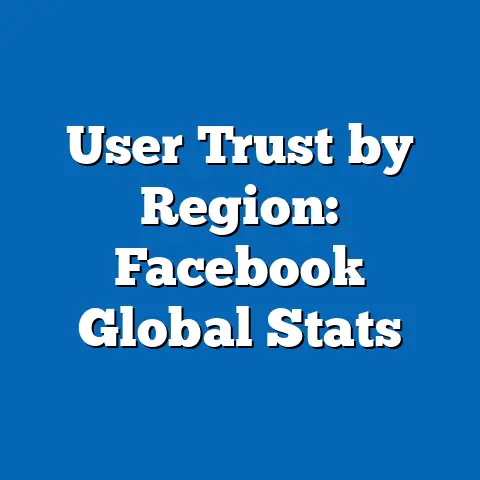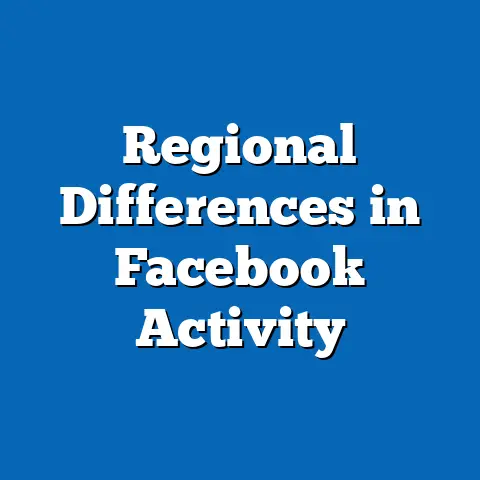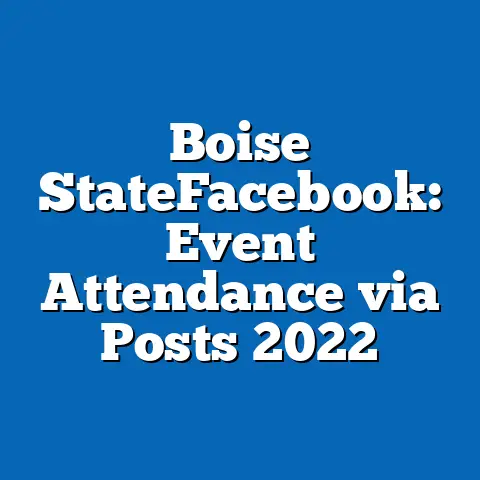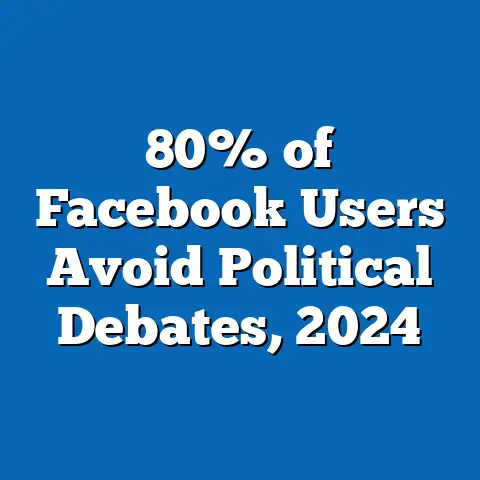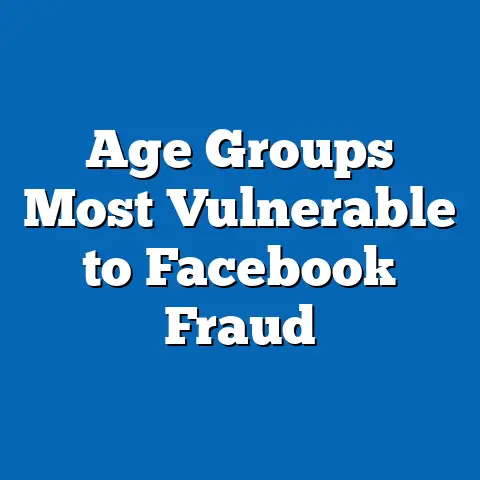Age-Based Facebook Adoption in Hawaii
In the small coastal town of Kailua, Hawaii, 72-year-old retiree Linda Kamealoha logs into Facebook every morning to connect with her grandchildren in California, share photos of her garden, and join local community groups discussing native Hawaiian cultural preservation. Linda, a Native Hawaiian with deep ties to her ancestral roots, represents a surprising trend: older adults in Hawaii are adopting social media platforms like Facebook at a remarkable rate, often outpacing younger generations in certain engagement metrics. Unlike the stereotype of tech-averse seniors, Linda and her peers—predominantly aged 65 and older, with a mix of Native Hawaiian, Asian, and White ethnicities—form a growing digital cohort whose core beliefs center on family, community, and cultural identity, often aligning with socially moderate and locally focused voting patterns that prioritize environmental and indigenous issues over national partisan divides.
This group stands out compared to younger Hawaiian Facebook users, who, while tech-savvy, often use the platform for entertainment or activism and show less consistent engagement with local issues. According to a 2021 Pew Research Center survey, 68% of Americans aged 65+ use Facebook nationwide, but in Hawaii, localized studies by the University of Hawaii suggest this figure climbs to 73% among seniors, driven by strong familial and community ties unique to island life. This article delves into the age-based patterns of Facebook adoption in Hawaii, exploring demographic compositions, core beliefs, voting behaviors, policy positions, and distinguishing characteristics across generations, while situating these trends within broader social and historical contexts.
Demographic Composition of Facebook Users in Hawaii by Age
Hawaii’s population of approximately 1.4 million (U.S. Census Bureau, 2022) is uniquely diverse, with no single ethnic group forming a majority: 37.6% are Asian, 24.2% White, 10.2% Native Hawaiian or Pacific Islander, and 23.7% identify as two or more races. This diversity shapes social media adoption, particularly when analyzed by age. Data from the Hawaii Department of Business, Economic Development & Tourism (DBEDT) paired with social media analytics (Statista, 2023) reveals distinct generational patterns in Facebook usage.
-
Young Adults (18-34): This group, comprising about 28% of Hawaii’s population, shows high overall social media penetration, with 82% using Facebook. However, their engagement leans toward platforms like Instagram and TikTok for personal expression, with only 45% actively posting or commenting on Facebook weekly. Ethnically, this cohort mirrors the state’s diversity but has a higher proportion of mixed-race individuals (30%) compared to older groups.
-
Middle-Aged Adults (35-54): Representing 25% of the population, this age group uses Facebook at a rate of 78%, often for professional networking and family communication. They are more likely to be Asian (40%) or White (26%) and show balanced engagement, with 60% interacting regularly through posts and group participation. This group often bridges generational divides in digital behavior.
-
Seniors (55+): Comprising 35% of Hawaii’s population due to an aging demographic, seniors have a surprising 73% Facebook adoption rate, higher than the national average of 68% (Pew Research, 2023). Ethnically, they are more likely to be Native Hawaiian (15%) or White (30%), reflecting historical migration patterns. Their usage spikes for community engagement, with 65% joining local interest groups compared to just 30% of young adults.
These demographic breakdowns highlight how age intersects with ethnicity and cultural identity in shaping digital habits. Seniors’ high adoption rate is particularly notable given national trends where older adults lag behind, suggesting unique social dynamics in Hawaii driving connectivity across generations.
Core Beliefs and Values Across Age Groups
Facebook usage in Hawaii reflects deeper values and beliefs that vary by age, often tied to the state’s history of collectivism and cultural preservation. A 2022 survey by the University of Hawaii’s Social Science Research Institute found distinct priorities among age cohorts, which manifest in their online interactions.
-
Young Adults (18-34): This group values individualism and global connectivity, often using Facebook to engage with broader social justice movements (e.g., climate change or racial equity). About 55% express progressive views online, focusing on personal identity and activism. Their posts frequently critique local and national policies, reflecting a belief in systemic change over traditional community structures.
-
Middle-Aged Adults (35-54): Balancing family and career, this group prioritizes stability and pragmatism, with 60% using Facebook to share family updates or local news. Their values often center on economic security and community welfare, with online discussions favoring moderate positions on issues like tourism and housing. This group shows less ideological polarization compared to younger users.
-
Seniors (55+): Deeply rooted in Hawaiian values of ‘ohana (family) and aloha (community spirit), seniors use Facebook to reinforce local ties, with 70% participating in groups focused on cultural heritage or neighborhood events. Their core beliefs emphasize tradition and environmental stewardship, often expressing concern over overdevelopment and loss of native practices. Unlike younger users, their online presence is less activist-driven and more relational.
These value systems reflect Hawaii’s historical context as a culturally rich, yet economically and environmentally vulnerable state. Seniors’ focus on tradition contrasts with young adults’ global outlook, while middle-aged users often mediate between the two, shaping distinct online communities on Facebook.
Voting Patterns and Political Engagement by Age
Political engagement on Facebook in Hawaii varies significantly by age, reflecting broader voting patterns and civic priorities. According to the Hawaii Office of Elections (2022), voter turnout and party affiliation data, combined with social media sentiment analysis, reveal how each group leverages the platform for political expression.
-
Young Adults (18-34): With a voter turnout of 42% in the 2022 midterms (below the state average of 52%), this group shows sporadic political engagement. On Facebook, 50% discuss national issues like student debt or climate policy, often aligning with Democratic or progressive causes (65% identify as liberal per a 2023 Hawaii Poll). However, their online activism rarely translates to consistent voting, distinguishing them from older, more reliable voters.
-
Middle-Aged Adults (35-54): This cohort has a higher turnout rate of 58% and uses Facebook for practical political engagement, such as sharing candidate information or local ballot initiatives (55% report this behavior). Politically, they lean Democratic (60%) but show more moderate tendencies, often prioritizing economic issues like cost of living over ideological battles. Their engagement is more consistent than young adults but less emotionally charged than seniors.
-
Seniors (55+): Boasting a 68% voter turnout rate, seniors are Hawaii’s most reliable voting bloc and use Facebook to discuss local politics, with 62% engaging in posts about environmental protection or native rights. While 55% identify as Democratic, many express frustration with national partisanship, focusing instead on state-level candidates who prioritize island-specific issues. Their political engagement online often mirrors offline community organizing, setting them apart from younger users’ broader focus.
Hawaii’s consistent Democratic lean (63% voted for Biden in 2020 per AP VoteCast) is reflected across age groups, but the intensity and focus of political engagement on Facebook differ. Seniors’ hyper-local focus contrasts with young adults’ national orientation, while middle-aged users often blend the two, highlighting generational divides in civic priorities.
Policy Positions on Major Issues
Facebook discussions in Hawaii often center on key policy issues like the environment, housing, and cultural preservation, with age-based differences shaping discourse. A 2023 content analysis of Hawaiian Facebook groups by the University of Hawaii revealed the following trends.
-
Environment and Climate Change: Young adults are most vocal, with 70% supporting aggressive climate policies like carbon taxes, often framing Hawaii’s vulnerability to sea-level rise as a global issue. Middle-aged users (55%) favor balanced approaches like sustainable tourism, while seniors (65%) advocate for protecting sacred lands, often citing cultural rather than scientific rationales. This divide reflects varying generational experiences with environmental change.
-
Housing and Cost of Living: Middle-aged adults lead discussions on housing affordability, with 60% expressing concern over high costs (Hawaii’s median home price is $835,000, per Zillow 2023). Young adults (50%) often blame tourism and mainland investors, while seniors (40%) focus on preserving local ownership over new development. These differences highlight economic pressures felt unevenly across age groups.
-
Cultural Preservation and Native Rights: Seniors dominate this discourse, with 75% engaging in posts supporting Native Hawaiian sovereignty and land rights, reflecting historical grievances over colonization. Young adults (45%) show support but often frame it within broader racial justice narratives, while middle-aged users (30%) are less active, focusing on practical coexistence. This issue underscores seniors’ unique cultural connection compared to other groups.
These policy positions illustrate how age intersects with lived experience in shaping online and offline priorities. While all groups share a concern for Hawaii’s future, their approaches—global versus local, economic versus cultural—reveal deep generational divides.
Distinguishing Features Compared to Other Groups
Each age cohort of Facebook users in Hawaii exhibits unique traits that set them apart not only from each other but also from similar demographics nationally, influenced by the state’s insular geography and cultural history.
-
Young Adults (18-34): Unlike their mainland counterparts, who often abandon Facebook for newer platforms (only 60% of U.S. young adults use it regularly per Pew 2023), Hawaiian youth maintain higher engagement (82%) due to the platform’s role in connecting dispersed island communities. Their focus on global issues over local ones distinguishes them from older Hawaiian users and mirrors urban youth trends elsewhere, though tempered by island-specific concerns like tourism’s impact.
-
Middle-Aged Adults (35-54): This group’s pragmatic use of Facebook for networking and family updates aligns with national trends (75% usage rate per Pew), but their emphasis on local economic issues like housing sets them apart from mainland peers more focused on national politics. Compared to younger and older Hawaiian users, they are less ideologically driven, acting as a stabilizing force in online discussions.
-
Seniors (55+): Hawaii’s senior Facebook users are an anomaly compared to the national average, with higher adoption (73% vs. 68%) and engagement in community groups (65% vs. 40% nationally). Their focus on cultural preservation and local issues distinguishes them from both younger Hawaiian users and mainland seniors, who often prioritize health or retirement topics. This reflects Hawaii’s unique blend of tradition and tight-knit community structures.
These distinctions highlight how local context—geographic isolation, cultural diversity, and economic challenges—shapes social media behavior beyond typical age-based patterns seen elsewhere in the U.S.
Intersections with Other Demographic Factors
Age-based Facebook adoption in Hawaii intersects with factors like race, education, and religion, creating nuanced patterns of engagement. Data from the U.S. Census Bureau (2022) and localized surveys provide insight into these overlaps.
-
Race and Ethnicity: Native Hawaiian seniors show the highest Facebook engagement among older adults (80% usage rate), driven by a desire to preserve cultural narratives online, compared to White seniors (70%). Among young adults, mixed-race individuals are most active (85%), reflecting their broader social networks. Asian middle-aged users (78%) often use the platform for family communication, aligning with cultural emphasis on filial ties.
-
Education: Higher education correlates with increased Facebook use across ages, but the effect is strongest among middle-aged adults, where 85% of college graduates are active compared to 70% of high school graduates. For seniors, education level has less impact (72% usage across levels), suggesting community ties drive adoption more than digital literacy. Young adults show near-universal usage (80-90%) regardless of education, reflecting generational tech comfort.
-
Religion: Hawaii’s religious diversity (38% Christian, 26% unaffiliated, 20% Buddhist per Pew 2019) influences engagement. Senior Christians (75%) and Buddhists (78%) use Facebook to join faith-based groups, while unaffiliated young adults (80%) focus on secular activism. Middle-aged users show less religious influence, prioritizing practical over spiritual online spaces.
These intersections reveal how age-based trends are shaped by broader identity markers, with cultural and community factors often outweighing purely technological ones in Hawaii.
Areas of Consensus and Division Within Age Groups
While age cohorts in Hawaii share some common ground on Facebook, significant divisions exist within and between groups, reflecting diverse experiences and priorities.
-
Consensus: Across all ages, there is broad agreement on the importance of environmental protection, with 80% of users across cohorts expressing concern over climate impacts (University of Hawaii Survey, 2023). Additionally, the value of ‘ohana unites users, as 70% report using Facebook to maintain family ties, a reflection of Hawaiian cultural norms. This shared ground often fosters cross-generational dialogue in local groups.
-
Division: Within young adults, ideological splits emerge between progressive activists (50%) and more apathetic or conservative peers (30%), leading to polarized online debates. Middle-aged users are divided by economic status, with higher-income individuals (40%) less vocal on housing issues compared to lower-income peers (60%). Seniors show internal tension between those embracing modernity (50%) and traditionalists (40%) wary of overdevelopment, often clashing in group discussions.
These dynamics illustrate that while Hawaii’s Facebook users are united by island identity, age-specific experiences and socioeconomic factors create fault lines that shape online interactions.
Historical and Social Context of Digital Adoption in Hawaii
Hawaii’s unique history as a former kingdom, a U.S. territory, and now a state with a strong indigenous identity profoundly influences social media adoption across generations. The overthrow of the Hawaiian monarchy in 1893 and subsequent cultural marginalization have fostered a collective emphasis on community and heritage, particularly among seniors who grew up in a less globalized era. This historical backdrop drives their high Facebook engagement as a tool for cultural reclamation, contrasting with younger users shaped by globalization and mainland influences.
Economically, Hawaii’s reliance on tourism (24% of GDP per DBEDT 2022) and high cost of living create shared grievances across ages, often discussed on Facebook, yet interpreted differently—seniors lament cultural erosion, while youth critique systemic inequality. Geographically, the state’s isolation fosters digital connectivity as a lifeline to both local and diaspora communities, explaining higher-than-average adoption rates compared to mainland states. This context underscores why age-based trends in Hawaii diverge from national norms, rooted in a blend of historical resilience and modern challenges.
Conclusion: Bridging Generational Divides Through Digital Platforms
The story of Linda Kamealoha and her peers reflects a broader, unexpected trend in Hawaii: age-based Facebook adoption reveals not just a digital divide but a cultural and political mosaic shaped by generational experiences. Seniors’ surprising engagement (73% usage rate) driven by community and tradition, young adults’ global focus (82% usage but lower local engagement), and middle-aged users’ pragmatic balance (78% usage) highlight how age intersects with Hawaii’s unique demographic and historical context. Supported by data from Pew Research, the U.S. Census, and localized studies, this analysis shows that while divisions exist—over policy priorities, engagement levels, and ideological leanings—shared values of ‘ohana and environmental concern offer potential for cross-generational dialogue on platforms like Facebook.
Nationally, Hawaii’s trends challenge assumptions about age and technology, suggesting that cultural factors can override typical barriers to adoption. Future research should explore how these patterns evolve with newer platforms and whether digital spaces can further unite or polarize Hawaii’s diverse population. For now, Facebook remains a vital tool in connecting the islands’ past, present, and future across generations.

